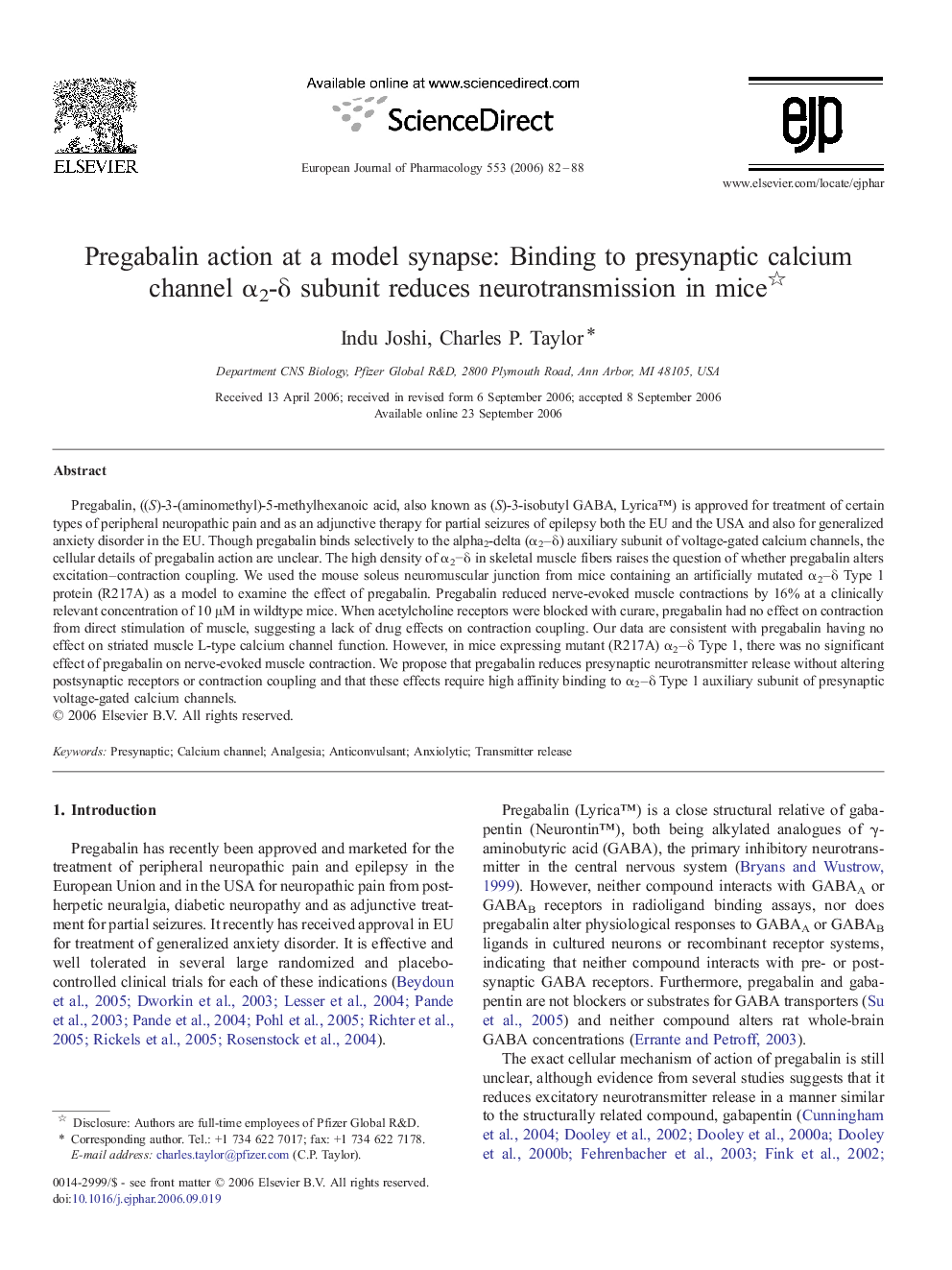| Article ID | Journal | Published Year | Pages | File Type |
|---|---|---|---|---|
| 2536553 | European Journal of Pharmacology | 2006 | 7 Pages |
Pregabalin, ((S)-3-(aminomethyl)-5-methylhexanoic acid, also known as (S)-3-isobutyl GABA, Lyrica™) is approved for treatment of certain types of peripheral neuropathic pain and as an adjunctive therapy for partial seizures of epilepsy both the EU and the USA and also for generalized anxiety disorder in the EU. Though pregabalin binds selectively to the alpha2-delta (α2–δ) auxiliary subunit of voltage-gated calcium channels, the cellular details of pregabalin action are unclear. The high density of α2−δ in skeletal muscle fibers raises the question of whether pregabalin alters excitation–contraction coupling. We used the mouse soleus neuromuscular junction from mice containing an artificially mutated α2–δ Type 1 protein (R217A) as a model to examine the effect of pregabalin. Pregabalin reduced nerve-evoked muscle contractions by 16% at a clinically relevant concentration of 10 μM in wildtype mice. When acetylcholine receptors were blocked with curare, pregabalin had no effect on contraction from direct stimulation of muscle, suggesting a lack of drug effects on contraction coupling. Our data are consistent with pregabalin having no effect on striated muscle L-type calcium channel function. However, in mice expressing mutant (R217A) α2–δ Type 1, there was no significant effect of pregabalin on nerve-evoked muscle contraction. We propose that pregabalin reduces presynaptic neurotransmitter release without altering postsynaptic receptors or contraction coupling and that these effects require high affinity binding to α2–δ Type 1 auxiliary subunit of presynaptic voltage-gated calcium channels.
